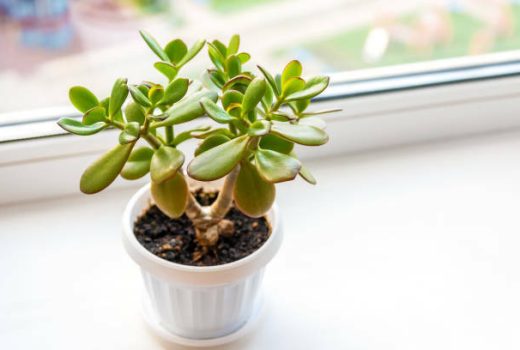Jade plants are very simple and easy to grow. People like growing these plants in their offices and homes because of their splendor. Jade plants have woody stems with oval-shaped leaves. They have a miniature tree-like appearance that makes them an ideal choice for decorative purposes.
However, they are susceptible to fungal diseases and mealy bugs. Therefore, jade plant care is a bit difficult job. If you care for them properly, they can reach up to 3 feet or even more height. This article teaches you how to care for jade plants in detail. Let’s get started…
Jade Plant Care – Easy Steps to Care Your Jade Plants
The care and maintenance of the jade plant is not a herculean task. All you need to pay a little bit of attention to some of the most important factors such as water, light, fertilizer, and temperature. Let’s talk about different jade plants caring factors one by one…
Soil Preparation for Jade Plant Care
Jade plant care begins with soil preparation. Therefore, you must prepare the soil well before planting the plants. It’s good to use an all-purpose mix soil with proper drainage. If drainage is not good, your plants will be vulnerable to many fungal diseases such as root rot.
You can improve drainage by adding additional perlite into the soil. A 1:2 ratio of perlite to the potting mix is recommended. You can also use a pre-made succulent or cacti potting mix as an alternative option.
Temperature and Humidity
The ideal summer temperature for jade plants is between 65 to 70o F. However, they prefer a cooler environment (below 55o F)in the winter and at night.
You can keep your plants outdoors if the temperature is moderate. But don’t forget to bring them indoors when temperatures begin to fall to around 50o F. Because they are not frost-tolerant so the frosty environment can severely damage the plants.
Avoid Frequent Watering
Watering the plants is a very important factor for jade plant care. For example, frequent watering can be a cause of fungal diseases such as root rot.
When plants are growing, they need more water than other times of the year. Once water your plants deeply. Then, don’t water the plants again until the soil has almost dried out. So keep your eye on the soil. If you find that almost dried, you should water the plants again. Hence, you could end up watering them once a week in summer and once a month in winter.
Fertilize the Plants
Fertilizing the plants is another important factor of Jade plant care. You should fertilize the plants during the growing season because it speeds up the growth process. Further, plants remain healthy and fresh due to the balanced fertilizer. It’s good to use a balanced 20-20-20 fertilizer for your plants.
Before using any fertilizer, try to remove that’s strength up to half for mature plants. For young plants, you should choose a fertilizer with less nitrogen.
Additional Jade Plant care Tips
Here are some additional Jade plant care tips every gardener should know:
- Don’t splash water on the leaves when watering because they can rot in a humid environment.
- You should use filtered or distilled water if normal tap water is not ideal. Because Jade plants are sensitive to salts. So try to avoid saltwater.
- If you find the plant leaves waterlogged or squishy, it indicates that the plant is getting excessive water than needed.
- Brown spots on the leaves and drop of leaves indicate that your plants need more water.
- You should fertilize the plants sparingly. It’s better to use a diluted mix of standard liquid houseplant fertilizer. A fertilizer made for succulents and cacti is another good alternative to houseplant fertilizer.
- In winter, you should move the plants away from drafty areas and cold windows.
Jade Plant Care From Pests & Diseases
Here are some important pests and diseases of jade plants:
Mealybugs or Scale
They may hide under leaves. You can remove the pests using a spray bottle. Plus, you can also remove them by gently rubbing the affected area with alcohol on a cotton swab or paper towel. You can cut the heavily affected leaves or branches of the plants if you can’t remove them easily with spray bottles.
Repeat the cleaning process again and again until all pests are removed. For heavily infested plants, it’s better to grow new plants and eradicate all the affected plants.
Powdery Mildew
This problem is most often found in outdoor plants. If you find this problem in your plants, you should move them indoors immediately.
Root Rot
Root rot is another common problem in jade plants like other household plants. It happens due to excessive watering. Therefore, don’t water the plants until the soil dries out.

